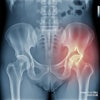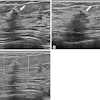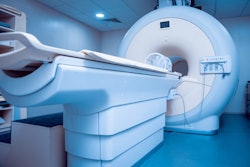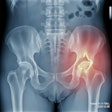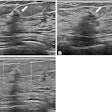While ultrasound does not produce much greenhouse gas emissions, other supplies used for ultrasound exams may contribute to total emissions, according to research published October 4 in the Journal of the American College of Radiology.
A team led by Katherine Frederick-Dyer, MD, from the Vanderbilt University Medical Center in Nashville, TN, assessed the environmental impact of ultrasound and reported that linens and disposable supplies account for most greenhouse gas emissions for routine ultrasound exams.
“This detailed assessment demonstrates that, unlike CT and MRI, the environmental impact from ultrasound is largely supply-driven,” the Frederick-Dyer team wrote.
Previous studies have evaluated the environmental impact of CT and MRI, since the scanners for each modality use large amounts of energy. And while ultrasound uses less energy than CT or MRI, its production and widespread global use may cumulatively add to greenhouse gas emissions.
Frederick-Dyer and colleagues performed a life-cycle assessment of ultrasound machines at a single academic medical center, focusing on diagnostic imaging for adults. They studied resource consumption, such as single-use supplies and bedding associated with ultrasound exams. The team focused its study on two ultrasound machines, with one being in the emergency department and the other being in the main radiology department.
While linens and disposable supplies made up nearly 70% of CO2 equivalent (CO2e) in the study, the team reported that production and energy use were minor contributors. All contributing factors totaled 17 kt of emissions during the life cycle assessment.
“This total is equivalent to driving a car 42,200 miles,” the researchers wrote.
Contributors of energy use for ultrasound exams | |
Contributor to emissions | CO2e produced (in kt) |
Linens | 5.5 |
Disposable supplies | 5.5 |
Image production | 1.1 |
Energy use from equipment | 0.5 |
Per scan, ultrasound units emit about 1 kg of CO2e. This is equal to driving a gas-powered car about 2.5 miles, the team reported.
Finally, the use of solar photovoltaics would reduce cumulative greenhouse gas emissions for ultrasound services by about 12% to 15 kt CO2e. This is when the photovoltaics are used for electrical power for the ultrasound equipment alone.
The study authors outlined several strategies that practices can implement to reduce emissions while maintaining a safe environment for patient care.
These include assessing linen use, transitioning to sustainably sourced linen fibers, avoiding overuse of ultrasound gel, recycling gel bottles, switching to compostable products, and optimizing protocols to acquire necessary images for diagnostic studies, among others.
“It bears repeating that the preferential use of ultrasound, when clinically appropriate, rather than CT or MRI, can reduce both energy use for a department and costs to a healthcare system,” the authors added.
Read the full study here.

